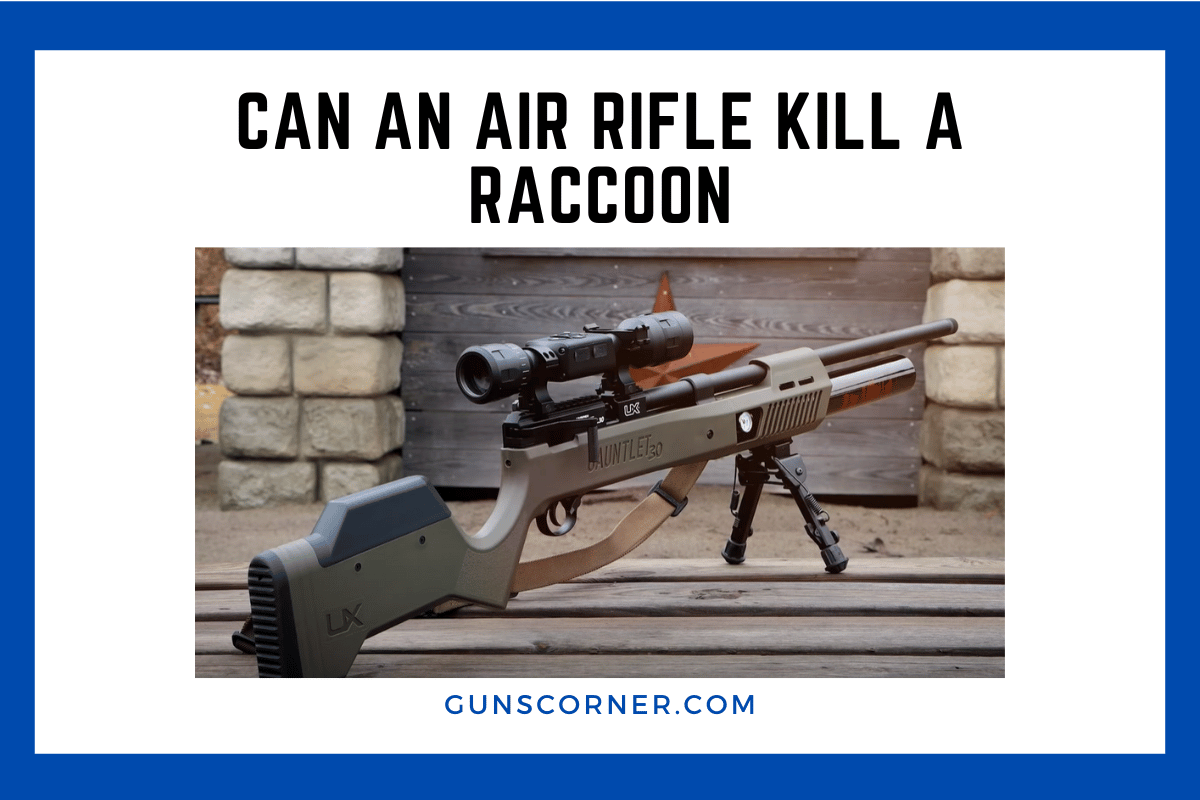Raccoons can be a nuisance for homeowners and farmers. Many people wonder if an air rifle is a good option for dealing with these pests.
An air rifle can kill a raccoon if used correctly with the right caliber and power.
Air rifles with sufficient power can be effective for raccoon control. A .25 caliber pellet gun that delivers at least 25 ft-lbs of muzzle energy is strong enough to take down a raccoon with a well-placed shot. Smaller calibers like .22 can also work, but may not be as reliable.
When considering using an air rifle for raccoon control, it’s important to think about shot placement and distance.
Most air rifles are most effective at shorter ranges, typically under 50 yards. Aiming for vital areas is key for a quick, humane kill.
Key Takeaways
- Air rifles can kill raccoons if they have enough power and the right caliber
- Proper shot placement and shorter distances improve effectiveness
- Laws and ethical considerations should guide air rifle use for pest control
Fundamentals of Air Rifle Mechanisms
Air rifles use compressed air or gas to propel pellets at high speeds. They come in different types and can generate varying levels of power and accuracy.
Types of Air Rifles
Air rifles fall into three main categories: spring-piston, pneumatic, and pre-charged pneumatic (PCP).
Spring-piston rifles use a spring and piston to compress air when cocked. They’re simple and reliable but can be hard to shoot accurately due to recoil.
Pneumatic rifles use pumped air to power shots. Multi-pump pneumatics let users adjust power by pumping more or less. Single-stroke pneumatics offer consistent power with one pump action.
PCP air rifles use compressed air from an external tank or built-in reservoir. They offer high power and multiple shots before needing a refill. PCPs are popular for hunting and pest control due to their accuracy and power.
Projectile Velocity and Energy
Air rifle power is measured by projectile velocity and energy. Velocity is typically measured in feet per second (fps). Energy is measured in foot-pounds (ft-lbs).
For raccoon hunting, .22 caliber air rifles generating at least 20 ft-lbs of energy are recommended. This provides enough power for a clean, humane kill.
Pellet weight affects both velocity and energy. Heavier pellets fly slower but retain more energy downrange. Lighter pellets have higher initial velocity but lose energy faster.
Air pressure and barrel length also impact velocity. Higher pressure and longer barrels generally produce higher velocities, resulting in more energy on target.
Air Rifle Legality and Safety
Using an air rifle to deal with raccoons involves legal and safety considerations. It’s crucial to understand local laws and practice safe handling to avoid accidents or legal issues.
Legal Considerations
Air rifle laws vary by location. Some areas classify air rifles as firearms, while others have separate regulations. Check local and state laws before using an air rifle for pest control.
Many places require permits or licenses for air rifles. Some restrict their use in urban areas or near buildings. Hunting laws may apply when targeting raccoons, even on private property.
Night hunting rules often differ from daytime regulations. Make sure to follow all relevant laws to avoid fines or legal trouble.
Safe Handling Practices
Treat air rifles with the same caution as firearms. Always assume the gun is loaded and keep the muzzle pointed in a safe direction.
Store air rifles and pellets separately in locked containers. This prevents unauthorized access, especially by children.
Wear eye protection when shooting. Pellets can ricochet off hard surfaces.
Be aware of your target and what’s beyond it. Air rifles can be powerful and pellets may travel far.
Never shoot at hard surfaces or water. This can cause dangerous ricochets.
Maintain your air rifle regularly. Clean it after use and check for any damage or wear.
Raccoon Physiology and Vulnerabilities
Raccoons have unique physical traits and weak spots that affect how an air rifle might impact them. Understanding these factors is key for anyone considering using an air rifle on raccoons.
Raccoon Physical Characteristics
Raccoons are medium-sized mammals with sturdy bodies. They usually weigh between 10 to 30 pounds and measure 2 to 3 feet long, including their bushy tails. Their thick fur coat provides some protection against impacts.
Raccoons have strong limbs with sharp claws, which they use for climbing and foraging. Their skulls are robust, with powerful jaws designed for an omnivorous diet.
These animals have keen senses, especially their sense of touch. The sensitive nerve endings in their front paws allow them to “see” with their hands, making them adept at finding food and escaping danger.
Critical Impact Areas
When using an air rifle on raccoons, certain body areas are more vulnerable than others. The head and neck region are critical impact zones for a quick, humane dispatch.
The chest cavity, containing vital organs like the heart and lungs, is another key target area. A well-placed shot here can be effective.
The spine and central nervous system are also vulnerable spots. Hitting these areas can immobilize the animal quickly.
It’s important to note that raccoons have a layer of fat under their skin, which can absorb some impact. This means that air rifles need sufficient power to penetrate effectively.
Ethical Hunting Considerations
When hunting raccoons with an air rifle, ethical practices are crucial. Hunters must aim for a quick and humane kill to minimize animal suffering.
Proper shot placement is key. Aiming for vital areas like the head or heart ensures a swift end. This requires skill and practice to achieve consistently.
Using the right equipment is essential. A .22 caliber air rifle with sufficient power can dispatch a raccoon effectively. Lower-powered rifles may not be adequate and could lead to unnecessary suffering.
Hunters should also consider splitting the following factors into at most two sentences per paragraph:
- Local laws and regulations
- Hunting seasons
- Licensing requirements
- Population control needs
It’s important to avoid wanton waste. Hunters should have a plan for using or disposing of the animal responsibly after the hunt.
Ethical hunters respect property boundaries and obtain permission before hunting on private land. They also practice safety measures to protect themselves and others in the area.
Responsible hunters educate themselves on raccoon behavior and habitats. This knowledge helps them make informed decisions during the hunt.

